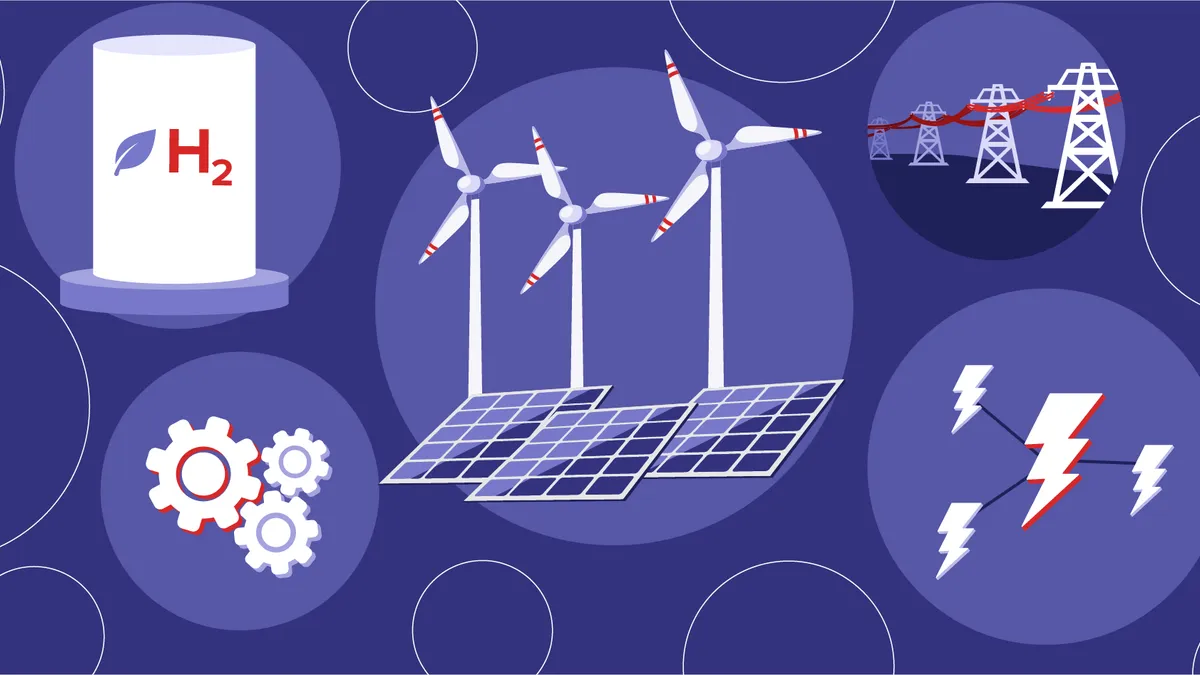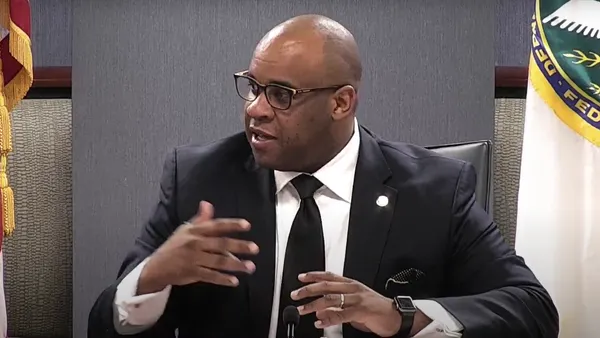The following is a contributed article by Brien J. Sheahan, former Chairman and CEO of the Illinois Commerce Commission, and former chairman of the National Association of Regulatory Utility Commissioners' Presidential Task Force on Innovation.
Increasingly urgent calls for governmental policies to address climate change, customer preferences favoring decarbonization, and the fast-paced evolution of energy technology are crashing up against sluggish century old regulatory paradigms. The challenge to integrate renewables and electric vehicles. to support distributed resources, and to leverage the internet-of-things, machine learning and artificial intelligence while maintaining reliability, security and affordability requires new regulatory tools to align our existing infrastructure more quickly with 21st century technology.
Recently, industry leaders met at the National Clean Energy Week conference where a consensus emerged that current technologies are not up to meeting this challenge. The need to spur innovation for both generation and distribution is urgent with the federal government pushing for 60 to 80% of energy production in the United States to come from emission-free sources by 2030 and many states implementing laws that will intensify the transition to clean energy. Energy and utility transformation will be a heavy lift not only because of our long, and continued, reliance on fossil fuels, but also because utilities — which traditionally have conservatively invested in research and development — must create and implement new ways to interconnect and utilize distributed energy to meet de-carbonization goals on a system conceived at a time when the horse-and-buggy still plied the streets of American cities.
For more than a century, reliable, one-way, hub-and-spoke energy flow supported a steady, growing demand for energy in familiar, expected patterns. In 2020, energy usage across the country changed abruptly and maybe permanently, while recent extreme weather events in Texas, California, and Europe have revealed just how vulnerable critical infrastructure is too disruptive events. Dramatic climatic and technological changes, "will require utilities and regulators to reevaluate traditional assumptions [about utility incentives] by recognizing and rewarding innovation," as stated in a previous Utility Dive editorial.
What was supposition a few years ago is urgent reality today. The need for a modern, bi-directional energy grid in the United States, and a modern regulatory framework to support it, has become even more pressing because the regulatory process as it exists today makes it virtually impossible to meet the pace of change utilities are facing.
Consider how private industry approaches adaptation to change as a function of spending on research and development — McKinsey & Company research shows that private industry is way ahead of regulated utilities when it comes to investments in new technology. According to its study, the reinvestment of profits in basic research is highest for pharmaceutical and medical products (52%), which is trailed by technology and telecommunications (42%), industrials (30%), and construction and infrastructure (19%). Only 3% of profits from utilities is reinvested in R&D. In fact, the electric, gas, oil and utilities sectors make the lowest investments in R&D of all industries McKinsey surveyed.
Despite this bleak showing, the importance of investing in innovation is beginning to be recognized by policymakers. For example, proposals to increase energy R&D are included in the bipartisan American Energy Innovation Act which is currently circulating in Washington.
One way to accelerate R&D for utilities is to establish regulatory sandboxes, which offer both regulated and unregulated organizations the ability to propose and test products or services, business models or delivery mechanisms quickly and in a low-risk environment.
Efforts to expedite innovation in highly regulated industries started with financial technology (FinTech), businesses, but lately are also being introduced in other industries. For example, so-called energy regulatory sandboxes are already operating in Ontario, the Netherlands, Singapore, and the United Kingdom, and sandboxes for industries such as environmental management, health care, and transportation exist in Japan, Singapore, and Taiwan.
This approach to addressing the stifling lag between technological innovation and regulatory alignment typically involves several common attributes including open communication and collaboration between multiple stakeholders; small scale rapid testing with low risk and low cost; building on past successes; and avoiding past failures. The most important common attributes are the streamlining and expediting of process and procedures, flexibility, and reduction of regulatory risk.
Other essential attributes, where rules vary, include a pre-defined scope, eligibility and timing for participation, project solicitation and selection, and the legal and regulatory framework within which the sandbox operates including monitoring, compliance, flexibility, cost recovery, enforcement, and public participation.
Guidehouse notes that, "Energy-specific sandboxes must be carefully and thoughtfully designed, and … there are good arguments for … target[ing] the energy industry, particularly the power sector. The energy system is transforming toward a largely distributed and renewables-based future that will require an updated regulatory framework. Trialing some targeted policy changes now, at limited scale, will help ensure that the rules governing the system keep pace with the energy transformation."
Some agencies that oversee or support the energy sector are moving in the direction of sandboxes. This year, two noteworthy projects have been introduced that encourage collaboration toward innovation. The U.S. Department of Energy (DOE) created a $35 million fund for a new Advanced Research Projects Agency-Energy (ARPA-E) program "focused on developing technologies to reduce methane emissions in the oil, gas, and coal industries. This funding opportunity supports projects that can be replicated easily and commercialized quickly to cut methane accumulation in the atmosphere and mitigate the effects of climate change," the agency said.
In addition, the International Smart Grids Action Network (ISGAN) launched a new initiative on the development of regulatory sandboxes in early 2021 with the goal to "deepen learning and international exchange on the topic [because] regulatory sandboxes have been and are key in advancing smart grid and other innovations in the sector."
Regulatory sandboxes in the energy sector in, Canada, the Netherlands, Singapore, and United Kingdom provide inspiration for models to stimulate innovation in the United States.
Ontario, Canada
The Ontario Energy Board (OEB) Innovation Sandbox offers creators a way to submit ideas for projects that have the potential to bring about innovation in the delivery of natural gas or electricity services, as well as broader energy technology and service sectors. This sandbox also includes the consideration of regulatory barriers that could prevent implementation and work to overcome those potential barriers.
The OEB sandbox allows innovators to directly share projects that involve testing a new product, service or business model that is not widely in use in Ontario, even if isn't connected to a utility partner. Other parameters include that the proposed innovation relate to natural gas or electricity services and provide real benefits to consumers.
In the OEB sandbox, innovators can pursue opportunities to test innovative projects on a trial basis with the benefit of two potential types of support, assistance with temporary relief from regulatory requirements and/or customized guidance from OEB staff. The OEB sandbox also allows for the removal of barriers for innovative projects that can enhance service quality, cost efficiency, or system resiliency; and reduces regulatory uncertainty and risk to encourage innovation that benefits consumers.
The Netherlands
In the Netherlands, the Dutch Ministry of Economic Affairs administered a regulatory sandbox from 2015 to 2018 called Experiments Decentralized, Sustainable Electricity production. Consisting of 18 programs geared toward small community-based initiatives that explored peer-to-peer energy supply and transmission, independently developed tariffs, and decentralized energy production.
Singapore
The Singapore Energy Market Authority (EMA) created its sandbox to "actively enhance[e] our regulations and seek ideas that could support new energy technologies and business models." In its Framework for A Regulatory Sandbox for The Energy Sector in Singapore, issued in 2017, EMA shared that it views its sandbox as a way to provide it with an avenue to review its regulatory frameworks and to provide appropriate regulatory flexibility. Among the EMA challenges for innovators are ensuring reliability and rate designs and settlement mechanisms for the integration of distributed energy resources.
United Kingdom
Great Britain's independent energy regulator, Ofgem, works with the UK government, as well as industry and consumer groups, to deliver a net-zero economy, at the lowest cost to consumers.
Consistent with its mission to enable competition and innovation, Ofgem created a regulatory sandbox experiment in 2017, because [energy] system transformation and innovation will have a central role in remaking our energy landscape. Over time, as the system transitions, the rules that govern it will evolve too. But, where an innovator wants to trial something novel, or launch a new business now, some rules might be 'barriers' to making this happen."
Recognizing the importance that the regulatory framework plays in creating the new-energy economy, Ofgem not only provides tailored guidance and shared risk, but also time-limited relief from specific rules in its sandbox.
This is done to "support innovation and experimentation to create low carbon products and services that will directly benefit consumers," among other end goals, the areas of regulated gas and electricity. To ensure freedom of experimentation, they mitigate as many potential barriers as feasibly possible.
Ofgem has granted three sandboxes including one to F&S Energy for a peer-to-peer electricity matching service; Emergent Energy Systems Ltd. to trial a new industry methodology for delivering the right to switch suppliers for residential customers on microgrids; and for the London Power Networks and Eastern Power Networks to trial a new price-discovery methodology for facilitating investment in on-street EV charge point infrastructure.
In conclusion, creating a widely adopted regulatory framework in the United States that encourages experimentation and investment in new and emerging technologies is urgently needed to responsibly manage the rapidly evolving climate and technological challenges we face.





















